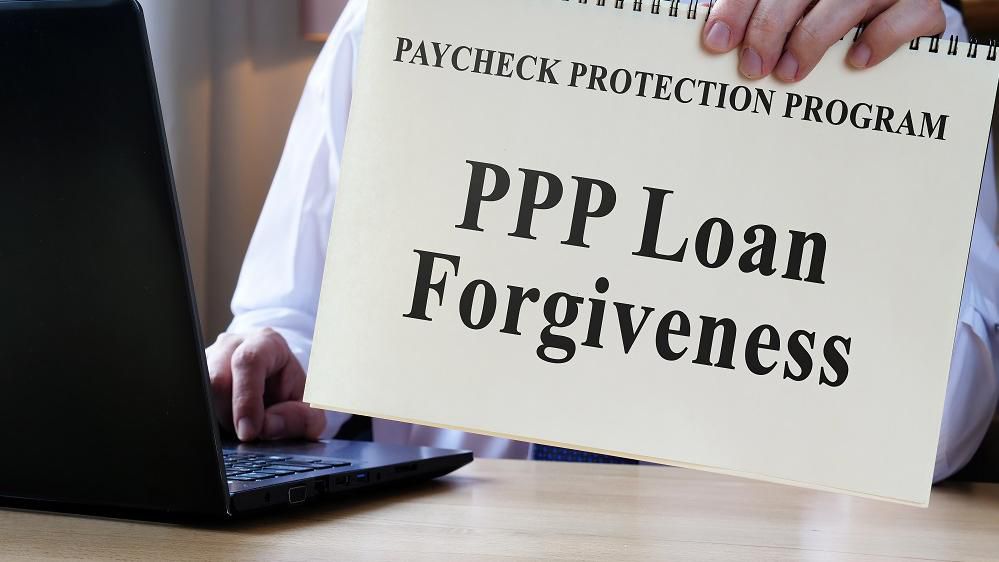
Some questions on federal coronavirus measures were answered Tuesday in guidance issued by the U.S. Small Business Administration (SBA) and Treasury.
SBA and Treasury issued two FAQs related to the Paycheck Protection Program (PPP) and three FAQs related to the PPP and Economic Injury Disaster Loans (EIDL). An interim final rule also was issued to establish procedures for prospective borrowers who want to appeal certain SBA loan decisions.
PPP FAQs No. 50 and 51 were added to a list of FAQs that first published in April. The new FAQs:
- Establish that the payment or nonpayment of fees of an agent or other third party is not material to the SBA’s guarantee of a PPP loan or to the SBA’s payment of fees to lenders.
- Permit payments for vision and dental benefits to be included in the group health care benefits and insurance premiums that are eligible to be paid with PPP funds.
The three FAQs related to the PPP and EIDL were added to a list of PPP forgiveness FAQs that was first published Aug. 4. The new FAQs:
- Describe how a lender will be able to confirm the amount of any EIDL advance that will be automatically deducted by the SBA from a PPP borrower’s loan forgiveness amount when the borrower has received both EIDL and PPP funds. Lenders can confirm the advance amount through the PPP Forgiveness Platform.
- Instruct lenders on how to handle any remaining balance due on a PPP loan after the SBA remits the forgiveness amount to the lender, including if there has been a reduction in the forgiveness amount for an EIDL advance. Lenders must notify the borrower of the amount remitted by the SBA and when the first payment will be due. The loan must be repaid by the borrower before the maturity date, either two or five years. Previous guidance indicates that PPP loans originating before June 5, 2020, have a two-year term, unless the lender and borrower mutually agree to extend the maturity of such loans to five years. If the loan originated on or after June 5, 2020, the term is five years.
- Outline what a lender should do if a borrower received an EIDL advance in excess of the amount of its PPP loan. Lenders must notify the borrower when the first payment will be due, and the loan must be repaid by the borrower before the maturity date, either two or five years.
The new interim final rule establishes numerous review procedures, including:
- The right for a PPP borrower to request a review of a lender decision or an SBA decision that a borrower is ineligible for loan forgiveness. Final SBA decisions can be appealed to the Office of Hearings and Appeals (OHA). Borrowers may also request that the SBA review a lender decision outside of the OHA.
- Documentation requirements, time limits, and a walkthrough of the processes. Oral hearings are permitted only in specific scenarios following a request or at the judge’s election.
The PPP in brief
Congress created the PPP as part of the $2 trillion Coronavirus Aid, Relief, and Economic Security (CARES) Act, P.L. 116-136. The legislation authorized Treasury to use the SBA’s 7(a) small business lending program to fund forgivable loans of up to $10 million per borrower that qualifying businesses could spend to cover payroll, mortgage interest, rent, and utilities.
The loans are available to small businesses that were in operation on Feb. 15 with 500 or fewer employees, including not-for-profits, veterans’ organizations, Tribal concerns, self-employed individuals, sole proprietorships, and independent contractors. Businesses with more than 500 employees in certain industries also can apply for loans.
Congress designed the loans to support organizations facing economic hardships created by the coronavirus pandemic and assist them in continuing to pay employee salaries. PPP loan recipients can have their loans forgiven in full if the funds were used for eligible expenses and other criteria are met. The amount of the loan forgiveness may be reduced based on the percentage of eligible costs attributed to nonpayroll costs, any decrease in employee headcount, and decreases in salaries or wages per employee.
Congress approved $349 billion in PPP funding. After that money was quickly exhausted, Congress authorized another $310 billion, bringing the program total to $659 billion.
EIDL and the pandemic
Many businesses have used EIDL loans administered by the SBA to offset the pandemic’s effects. An EIDL is a low-interest, fixed-rate loan that can provide assistance to small businesses during an emergency.
EIDL loans are not forgivable, but the 30-year term provides payback flexibility to borrowers. In response to the pandemic, Congress also created $20 billion in EIDL advance grants that are not required to be repaid. Eligible applicants who applied for an EIDL were permitted to request up to $10,000 in EIDL funding to be immediately disbursed, and this advance grant amount did not need to be repaid, regardless of the loan decision.
The $20 billion in advance grants has been exhausted.
AICPA experts discuss the latest on the PPP and other small business aid programs during a biweekly virtual town hall. The webcasts, which provide CPE credit, are free to AICPA members. Go to the AICPA Town Hall Series webpage for more information and to register.
The AICPA’s Paycheck Protection Program Resources page houses resources and tools produced by the AICPA to help address the economic impact of the coronavirus.
For more news and reporting on the coronavirus and how CPAs can handle challenges related to the outbreak, visit the JofA’s coronavirus resources page or subscribe to our email alerts for breaking PPP news.


